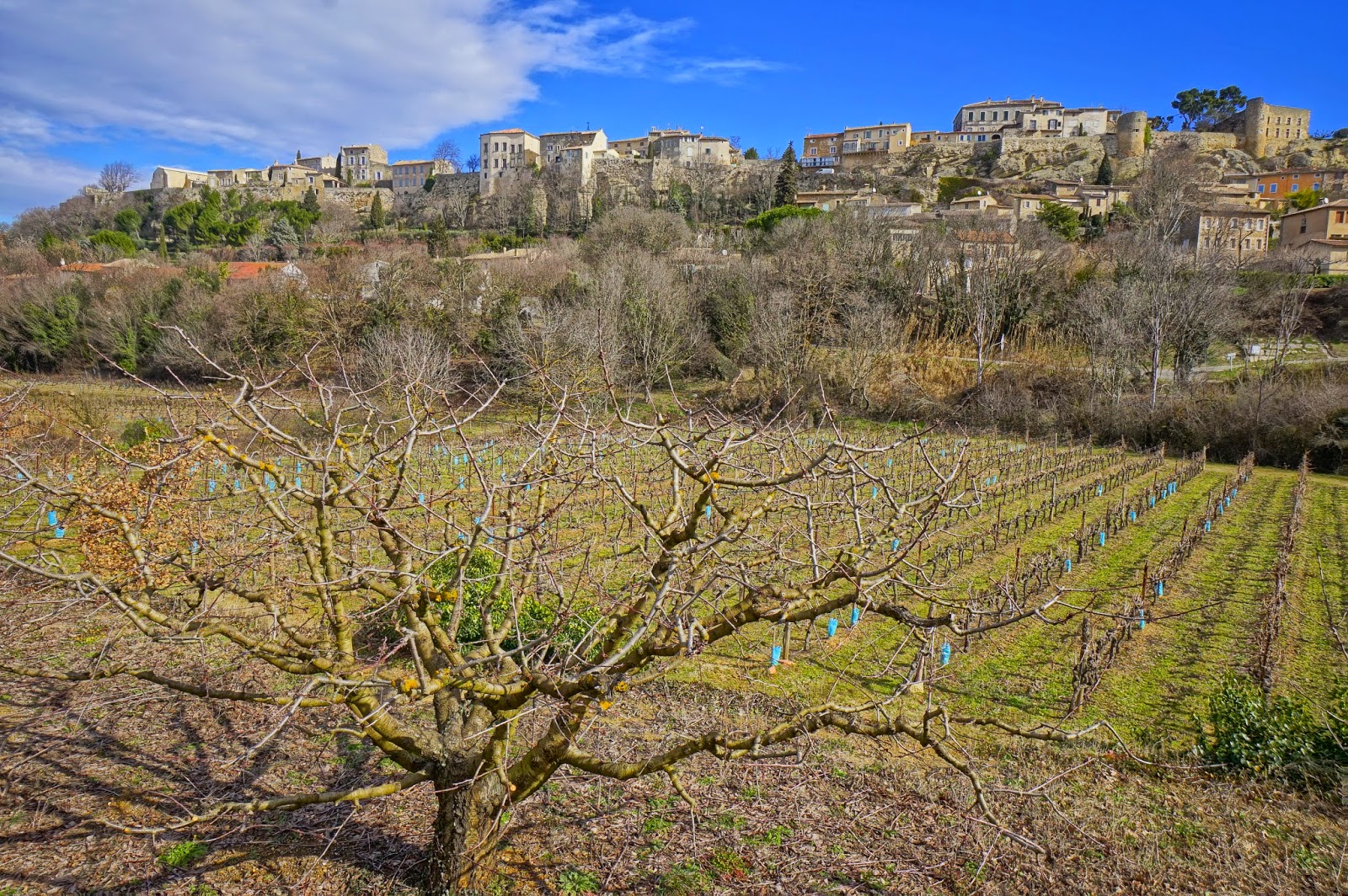 |
| Oppede-le-Vieux: A former ghost town returning slowly to life |
 |
| Oppede-le-Vieux: Main Square, if you can call it that. |
From there, it is a short drive to a trio of hilltop towns: Menerbes, Lacoste, and Bonnieux.
Menerbes is where Peter Mayle, the author of the popular novel "A Year in Provence," initially settled after retirement. Since that book helped put this region on the map, of course we have to check it out. Charming houses hang precariously on a ridge and we have to negotiate narrow steep roads. Pretty but we probably wouldn't want to live here.
 |
| Menerbes: where Peter Mayle chose to retire |
 |
| Menerbes: attractive town with tidy houses |
 |
| Menerbes |
The next stop, Lacoste, is identified with the notorious Marquis de Sade. The walk up to the ruins of his castle at the top is not bad, certainly not to the point of being a masochistic behavior. We are way behind schedule and it is already lunch time, but there are no restaurants to be found. One store is open but alas it only sells Lavande. We like the lavender smell but need food! We do run into a few cheerful American art students studying in Lacoste. I guess it is not a bad way to spend your parents' money for 8 weeks, or maybe I am harsh and the students are on their own.
 |
| Lacoste: the castle at top is the legacy of Marquis de Sade, now being restored by none other than Pierre Cardin |
.JPG) |
| Lacoste: a village seemingly made entirely of stone |
 |
| Lacoste: steep hills with Mt. Ventoux in the background |
Once we reach Bonnieux, there are finally signs of life. We devour pizza with complex toppings - oh, typical French. Bonnieux seems to offer the attraction of a hill town while not losing most of the modern practicalities. I could live here.
 |
| A typical farmhouse with a vineyard on the way to Bonnieux. Again Mt. Ventoux is visible. |
 |
| Approaching Bonnieux |
 |
| Bonnieux: Mt. Ventoux seen in the distance on right |
 |
| Bonnieux |
 |
| A view of Lacoste from Bonnieux |
 |
| Looking back at Bonnieux upon heading south |
At this point, we turn south to reach Lourmarin which most day trippers to the Luberon may skip. Despite being horribly behind schedule, I have to go there, mainly to pay homage to, not Mr. Mayle who apparently resides there after moving from Menerbes, but Albert Camus, who existed in Lourmarin in his later years and is buried there. The town cemetery is just outside the town and thankfully there are directions to his grave.
 |
| Entering Lourmarin |
 |
| Lourmarin |
 |
| Lourmarin: tomb of Albert Camus, where we come as strangers |
 |
| Approaching Roussillon: red rocks announce that we are in the ochre country |
.JPG) |
| Roussillon |
 |
| Roussillon: situated in the colorful canyon |
 |
| Roussillon |
 |
| Roussillon: surrounded by colors |
 |
| Roussillon |
 |
| Roussillon: streets are red and lined by art galleries |
 |
| Joucas: a view on the way to Gordes |
 |
| Approaching Gordes |
 |
| Senanque Abbey: total silence when we visited. Imagine the crowds when the lavender is in full bloom in July. |
 |
| leaving Gorgeous Gordes over the Gorge |
.JPG) |
| Dinner at Christian Etienne in Avignon is worth a detour. Nearby Carpenteras is the black truffle capital of this region. |
We leave St. Remy after breakfast toward the coast and Aix-en-Provence is a logical stop. (If we had more days, I would have liked to stop at Camargue and Cassis for nature.) Aix is a popular university town, but it fails to appeal to me, perhaps partly because of a few locals who seem snappy. Getting into town and parking in the center was not difficult. But after a brief visit including lunch, getting out of Aix is an entirely different matter. The GPS fails and we are left with a simple physical map. Normally I pride myself for being a good map reader, but the combination of one way curved streets that seem to abruptly end, constantly changing street names, lack of signs for getting to the highway, and heavy traffic conspire to keep me circling the central area.
.JPG) |
| Aix-en-Provence: Cours Mirabeau, a grand boulevard like Champ-Elysees in Paris |
 |
| Aix-en-Provence: Cours Mirabeau |
 |
| Aix-en-Provence: an artistic Apple store |
But even though we are running several hours late, I don't want to give up on one other attraction in the outskirts - Cezanne's last studio. Fortunately we catch a tour in English. I had planned to walk up the hill behind the studio to a site with a view of Mt. St. Victoire, which Cezanne loved to paint, but have to settle for a view from the highway. We are forced to cancel the dinner reservation at Nice. Art over dinner, some might say. But this is probably the worst driving day in my memory.
 |
| Aix-en-Provence: Atelier Cezanne. Cezannne is to Aix what van Gogh is to Arles. Cezanne's last studio preserves many of the objects that are found in his paintings. |

Really fantastic Carnival and Pictures.
ReplyDeleteDo you take pictures in TV mode?
Enjoy the rest of the travel!